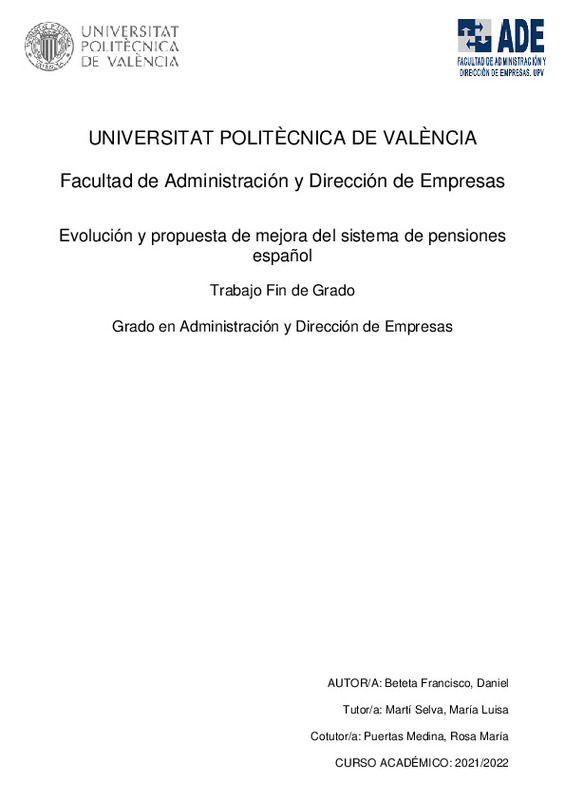JavaScript is disabled for your browser. Some features of this site may not work without it.
Buscar en RiuNet
Listar
Mi cuenta
Estadísticas
Ayuda RiuNet
Admin. UPV
Evolución y propuesta de mejora del sistema de pensiones español
Mostrar el registro completo del ítem
Beteta Francisco, D. (2022). Evolución y propuesta de mejora del sistema de pensiones español. Universitat Politècnica de València. http://hdl.handle.net/10251/188727
Por favor, use este identificador para citar o enlazar este ítem: http://hdl.handle.net/10251/188727
Ficheros en el ítem
Metadatos del ítem
| Título: | Evolución y propuesta de mejora del sistema de pensiones español | |||
| Otro titulo: |
|
|||
| Autor: | Beteta Francisco, Daniel | |||
| Director(es): | ||||
| Entidad UPV: |
|
|||
| Fecha acto/lectura: |
|
|||
| Resumen: |
[ES] A causa de la más que cuestionada sostenibilidad del sistema de pensiones español, debido tanto a la evolución demográfica como a las elevadas tasas de paro estructurales, surge una doble necesidad: estudiar cómo se ...[+]
[EN] Because of the more than questioned sustainability of the Spanish pension system, due to both demographic evolution and high structural unemployment rates, a double need arises: to study how it has reached the present ...[+]
|
|||
| Palabras clave: |
|
|||
| Derechos de uso: | Reconocimiento (by) | |||
| Editorial: |
|
|||
| Titulación: |
|
|||
| Tipo: |
|
Localización
recommendations
Este ítem aparece en la(s) siguiente(s) colección(ones)
-
ADE - Trabajos académicos [3699]
Facultad de Administración y Dirección de Empresas







